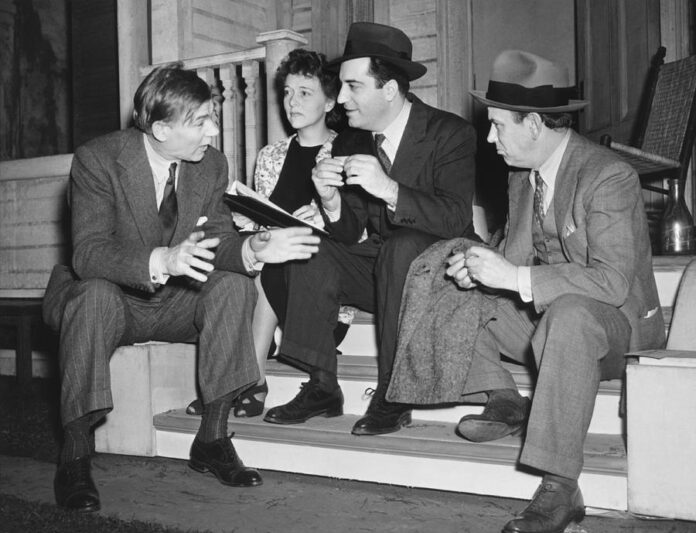The 1930s would be a resilient, creative decade, especially among Black men in America, against the backdrop of the Great Depression and racial segregation. Clothing could not be taken lightly; in fact, one had to speak volumes through this attire, to show pride and dignity, no matter how well-groomed or sophisticated that was.
From sharp zoot suits to elegant double-breasted suits, Black men of the 1930s embraced fashion that reflected both tradition and the growing influence of jazz culture, Harlem Renaissance style, and Hollywood glamour. In this article, we’ll explore the iconic clothing, trends, and cultural influences that shaped 1930s Black Male Clothing.
Key Clothing Styles of the 1930s
1. The Classic Suit: Elegance and Refinement
The 1930s saw a move away from the skinny suits of the 1920s to broader-shouldered, double-breasted suits that highlighted a strong, masculine silhouette. Common features included:
✔️ Wide lapels – A hallmark of the style, giving a bold, confident presence.
✔️ High-waisted trousers – Often pleated, these pants sat above the natural waistline and were worn with suspenders or belts.
✔️ Matching vests (waistcoats) – Added an extra layer of formality.
Dark colors like navy, brown, charcoal, and black were used for casual wear, whereas pinstripes and other bold patterns were used for special occasions.
2. The Zoot Suit: A Symbol of Rebellion and Style
The zoot suit emerged in the late 1930s and was a bold statement of fashion, especially among Black and Latino males in urban settings. These large suits were known for:
- Wide, long coats-creating dramatic silhouettes
- Loose, high-waisted pants-gathered into a small triangle at the ankles
- Vibrant colors, flashy accessories -asserting an individual style while defying strict notions of “fashion”
- Worn to nightclubs, jazz concerts, and social parties, the zoot suit had been closely related to the Harlem Renaissance and to jazz culture; it has, therefore, served as an essential marker of urbane Black fashion.
3. Casual and Workwear: Functional but fashionable
Although the formal dress served for specific functions, everyday apparel was driven by work and functional considerations. Items included:
- Button-up shirts with rolled sleeves – Often complemented with suspenders to appear smart and working.
- Wool sweaters and knitwear – Worn for warmth in cooler seasons, especially for men, but still with a sense of style.
- Overalls and work jackets – Essential for working-class men, mainly in jobs requiring heavy labor in farming, manufacturing, and the railroads.
- Even with casual clothing, neatness and presentation mattered much—shoes were polished, trousers well-pressed, and hats selected for the perfect finishing touch on any outfit.
Pop Accessories: Putting it all together
Accessories were crucial to defining the fashion of 1930s Black Male Clothing. Amongst the most memorable pieces include:
- Fedoras and Wide-Brimmed Hats – Essential both for formal and casual attire, these hats add a dash of sophistication to the outfit.
- Two-Tone Leather Shoes & Wingtip Oxfords – Sharp footwear choices that were polished to perfection.
- Pocket Watches & Chain Accessories – A symbol of class and attention to detail.
- Round Sunglasses – A stylish addition for men embracing jazz culture and nightlife fashion.
- Silk Scarves & Cravats – Worn for an extra touch of refinement.
Cultural Influences on Black Men’s Fashion
1. The Harlem Renaissance & Jazz Culture
The Harlem Renaissance was the defining moment of artistic and cultural expression (1910s–1930s). Black musicians, writers, and artists became fashion icons and inspired styles in men’s clothing.
- The sleek, tailored suits of the jazz musicians—Duke Ellington and Cab Calloway—set a trend.
- European influences were widely adopted by socialites in Harlem, who dressed in fine wool suits and designer accessories.
- Fashion in nightlife was bold, including bright colors, luxurious fabrics, and fashionable hats.
2. Hollywood & Black Film Stars
Though limited, Black performers in 1930s Hollywood dressed stylishly and influenced common men. Examples include:
- Paul Robeson-He was an actor who portrayed authority in the well-tailored suits.
- Bill “Bojangles” Robinson-He was a great tap dancer known for dressing elegantly in formal attire.
- Herbert Jeffries (“The Bronze Buckaroo”)-He was a cowboy film star who set new standards of dressing in a Black Western film.
3. The Great Depression & Economic Influence
Despite the economic depression of the 1930s, Black men continued to dress well. Many made their own suits or purchased second-hand, ensuring that they looked put together. “Sunday Best” outfits were also a must-have, as it was a mark of dignity and self-respect, especially within Black communities.
Conclusion
For Black men in the 1930s, fashion meant more than clothes; it meant resilience, pride, and a cultural identity. Whether in a classic suit, a daring zoot suit, or everyday workwear, style remained an essential part of self-expression.
These influences carry over to today’s modern style, whether through jazz-inspired men’s fashion, the return of tailored suits and vintage flair, or anything else. Black Male Fashion in 1930 shows that class is indeed timeless.



